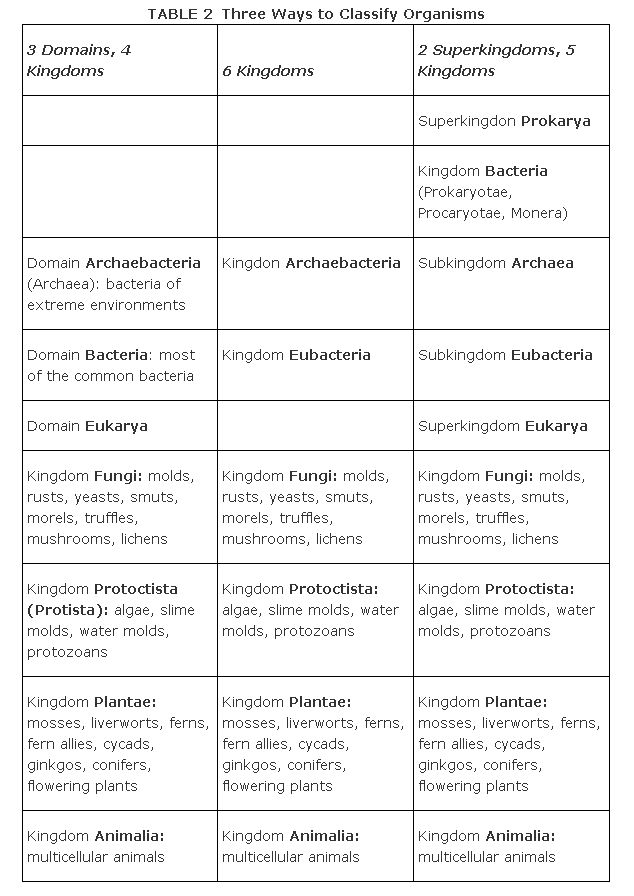Classification: Plants, Other Organisms
A century ago, botanists recognized four major groups of plants, but within 50 years these groups had been subdivided and rearranged into still further groupings. Table presents the old groupings of plants in considerable detail because some of the names persist as common names for modern plant groups, for example, thallophytes, gymnosperms, and monocots. By and large, the major groups (such as ferns, mosses, and flowering plants) are still recognized as units in today's more recent rearrangements but now appear with new technical names.
TABLE 1 Three Historical Classification Schemes of Organisms

A current lively debate among plant systematists concerns how best to incorporate the recently obtained data from molecular biology into a phylogenetic arrangement of the plant kingdom. (Configurations in the past were based primarily upon morphological and anatomical features.) Of interest as well is the controversy over the ranking of the two clearly different groups of bacteria. Are they “kingdoms,” “superkingdoms,” or “domains”? Should the classification of all living things start by first separating the prokaryotes and eukaryotes into two superior groups? Table 2 summarizes three current ways. Note that the four eukaryote groups are retained as “kingdoms” in all of the classifications.

Most plant biology texts mention briefly the multicellular animals and discuss in detail only the most plant-like of the protista. Bacteria and fungi are customarily included, although scientists no longer considered them to be plants. Table 3 gives an overview of the major groups usually studied in introductory plant biology courses. As always, your textbook is the best place to find pictures, more detailed information about plants and definitions of unfamiliar terms.